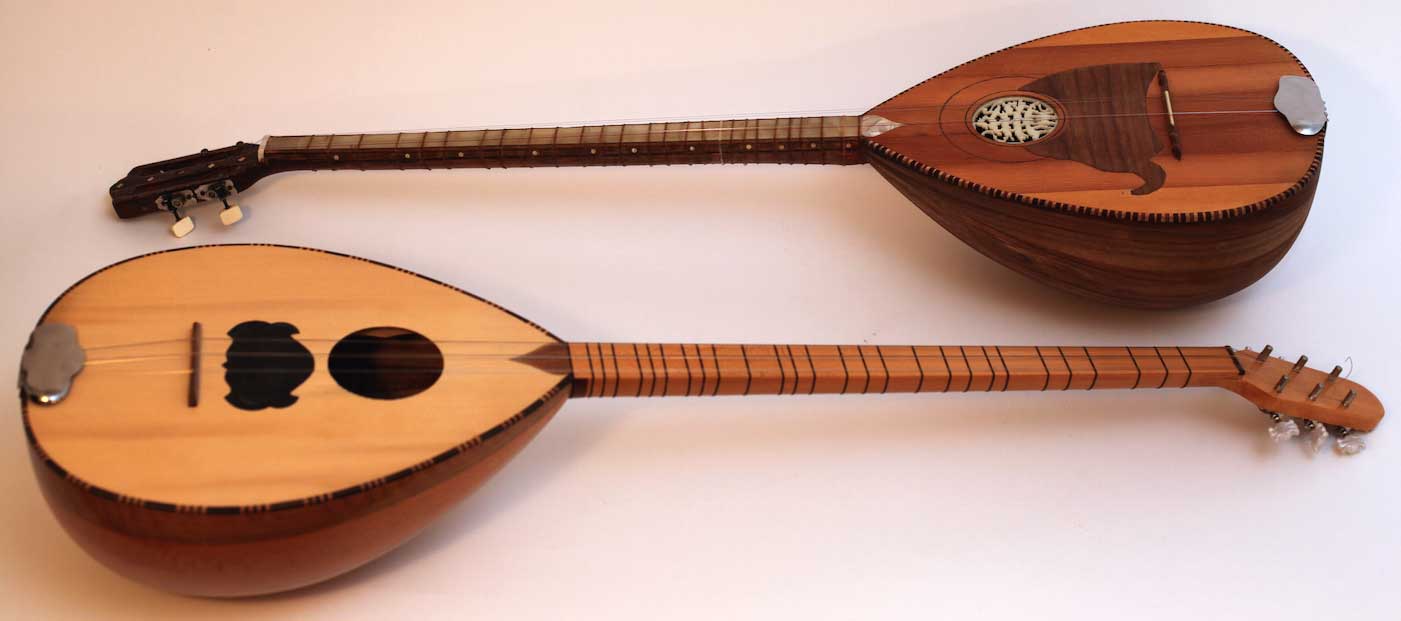 Two buzuq-s made in Lebanon. © MaqamWorld
Two buzuq-s made in Lebanon. © MaqamWorld
The Buzuq is a string instrument in the oud family with a smaller body and a longer, fretted neck. It is closer in shape to the Greek Bouzouki and the Turkish Saz. The Buzuq is originally a folk instrument from the Eastern Mediterranean (Palestine, Jordan, Lebanon and Syria) that's usually played solo. But it is listed along with the other traditional instruments because it crossed over to mainstream pop Arabic music toward the middle of the 20th century. Since then it has been featured in many recordings and live performances as became part of the Arabic ensemble.
The traditional Buzuq had two courses of metal strings, a double (C4) and a triple (G3), played with a thin piece of horn or a plastic plectrum. Today buzuq-s are made with three courses of strings in order to expand their range. The metal strings, along with the metallic tuning pegs (identical to those on a guitar) give the instrument a bright sound quality, while the fret distribution covers the most common quartertones. This and the fact that the player can move the frets slightly to fine tune their pitch allows the buzuq to tackle the most common maqam scales with acceptable precision.
Explore other traditional instruments: